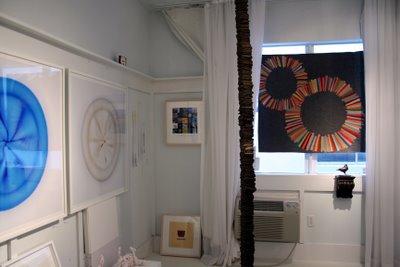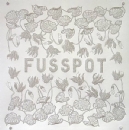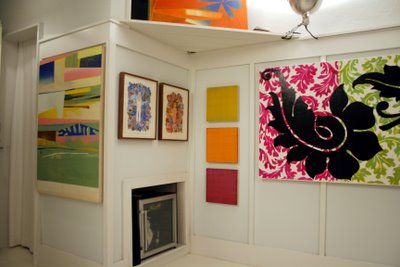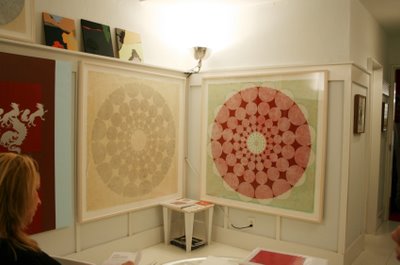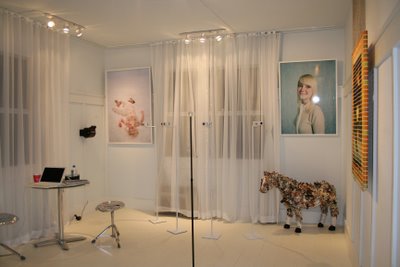Imagine Costco on steroids and filled with art. Now throw in a carnival atmosphere, tradeshow commercialism, museum reverence, fashion attitude, and the frenzy of Filene’s Basement when the bridal gowns go on sale.
Add sublimely beautiful contemporary paintings, modern masters from the secondary market (like Ad Reinhart from his pre-somber period in three booths), big-ass sculpture, inventive installations, cartoon imagery and some rice and beans (I’m not kidding). And, hey, why not include the oversize figure of a man performing a physically impossible scatological function? Like the blind men describing an elephant, no one perception comes close to describing this event but together they create a pretty good picture of this behemoth of a show.
© Joanne Mattera, 2006 www.joannemattera.com
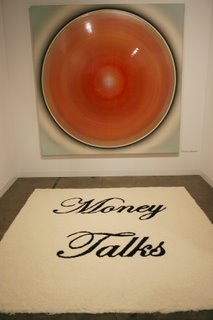 Saleswise, it was a dealer’s dream. I overheard this conversation between two exhibitors:
Saleswise, it was a dealer’s dream. I overheard this conversation between two exhibitors:
He: "How are you selling?"
She: "It’s good. It’s good."
He: "Everybody is selling everything! It’s crazy!"
Lucia Madriz: Money Talks, rice and beans, dimensions variable; painting by Robert Schaberl, both at Galeria Jacob Karpio
Ron Warren, director of the Mary Boone Gallery, which was changing its one-artist installations daily, put a finer point on it: "We sold out the Barbara Kruger show by 2:00 p.m. yesterday." It was the first day of the show. When I was there on Thursday, the show was of David Salle’s paintings and many, according to Warren, were sold. There were no red dots, but "sold" was resonating at a low frequency throughout the booth. Indeed, throughout the fair.
By the way, the lack of red dots was no indication of sales one way or another. According to one dealer I can’t name, most of the work was already sold before the show went up. "It’s the dirty little secret of these shows," she said. "Seventy percent of the work is spoken for beforehand, but the collectors like to say they bought it at Art Basel."
A little background
Basel Miami is set up with a hierarchy. The main show is composed of galleries whose booths are in the center of the exhibition space. The bigger galleries have bigger booths. I don’t have exact figures, but I think we’re in the $50,000 range for a mid-size booth. The newer or "emerging galleries" ring the room as part of the less-expensive Art Nova section. The designation Art Kabinett on a booth’s sign indicates that a museum-quality show is on display; typically there is a historical component, and the installation is more restrained than on the Midway, er, elsewhere in the hall.
Finally, Art Positions is out on the beach in Collins Park in shipping containers repurposed as exhibition spaces. It was too windy most of the time to go that close to the shore, and besides, I ran out of time, so you’ll have to get someone else to tell you about it. For the most part I’m skipping titles and sizes. (To be honest, it’s because I can’t read my own notes.) The installation images will give you a sense of scale, and if you want to know more you can go onto the gallery website, which is live-linked if you see the name in red.
Painting
One thing the Convention Center has in abundance is space, so there’s plenty of room for large painting and sculpture. What pleased me most were the geometric abstractions, in particular the most minimal ones in which color floated in and over the surface. That said, it was the big, brash geometric abstractions of Sarah Morris that initially drew my eye. She had work at Berlin’s Hetzler Gallery and London’s White Cube.
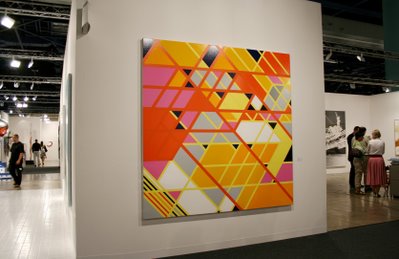
Sarah Morris: Hetzler Gallery (above) and White Cube (below). Both paintings described as "household gloss on canvas"
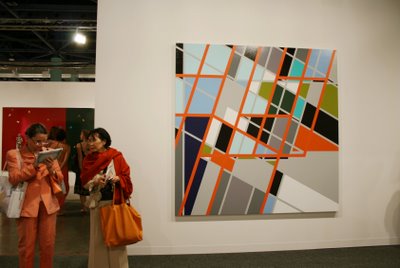
San Francisco’s Jack Hanley Gallery showed Chris Johanson, whose painting is worked in a more rectilinear manner. In Two Artists Talking, the blog I write with artist Chris Ashley , we looked at the blocky abstractions of several painters (Helen Miranda Wilson, Marco Casentini and Richard Schur), and Johanson’s work has a strong visual kinship there.
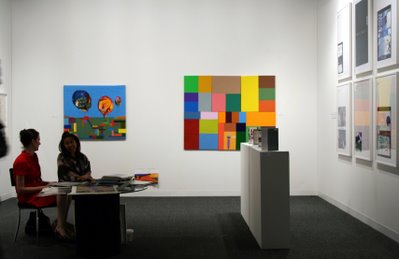 Chris Johanson’s geometric abstraction at Jack Hanley Gallery
Chris Johanson’s geometric abstraction at Jack Hanley Gallery
 .
.
.
.
.
.
.
.
.
.
.
.
.
.
.
The best discovery for me was the work of Yuko Shiraishi at London’s Annely Juda Gallery. Shiraishi, a Tokyo-born woman now living and working in London, paints reductive linear abstractions with a precision of line and delicacy of color. Her palette teeters on the edge of pretty, but the pristine geometry of the composition and the muscularity of the size (about five feet squarish) negate any sweetness. If Agnes Martin had been Amish, this is what she might have painted, don’t you think?
Yuko Shiraishi: Equipoise, 2006. In foreground: Crack and Warp Column by David Nash, both at Annely Juda Fine Art. Below: Diverge and Diverge 2, both oil on canvas, app. 60 x 48"

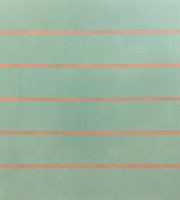
..
.
.
.
.
.
.
Imi Knoebel, whose work I encountered for the first time last year, did not disappoint. His work occupies a place between painting and sculpture. Some works are flat against the wall while others, definitely planar, are installed in a way that makes you consider the space around and behind them. He showed work with at least two galleries, the international (New York, Paris, Zurich) Galerie Lelong and Hamburg’s Galerie Vera Munro. Take a look:
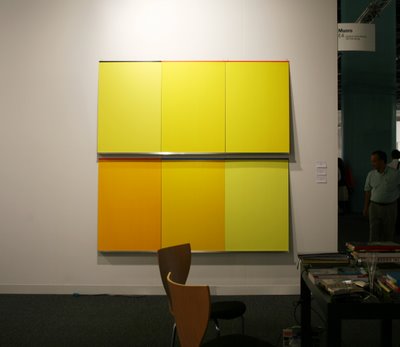 Imi Knoebel: Gelb (Yellow; above) with installation view at Galerie Vera Munro
Imi Knoebel: Gelb (Yellow; above) with installation view at Galerie Vera Munro
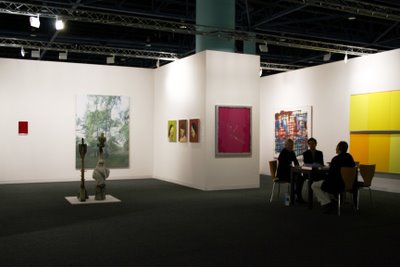 Luiz Zerbini,
Luiz Zerbini, another artist I was pleased to revisit, works in that same sculptural painting/planar sculpture zone. His work, as last year, was at
Fortes Vilaca from Sao Paolo. Brazil has an abundance of galleries with a strong program of geometric abstraction. Galeria Millan Antonio, also in Sao Paolo, showed an unlikely beauty in lavender and pale ultramarine by Paulo Pasta. 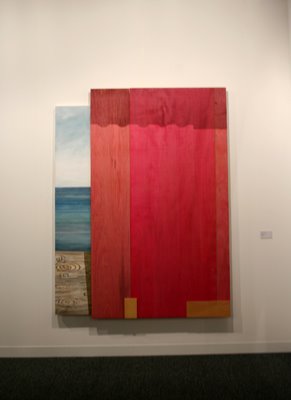
Luiz Zerbini: Paisagem Inutil (Useless Landscape, above), acrylic on wood and canvas, at Fortes Vilaca; Paulo Pasta at Millan Antonio, both Sao Paulo
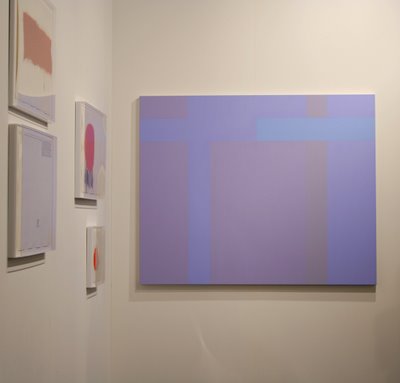
As for abstraction without the geometry, five large paintings drew my attention. The first was the cinematic Donde Llegar by Corinne Wasmuht at Cologne's Galerie Gisela Capitain. The second was by Hiroshi Sugito at Berlin's Arndt & Partner, as sweetly intimate as a larger-than-life painting can be.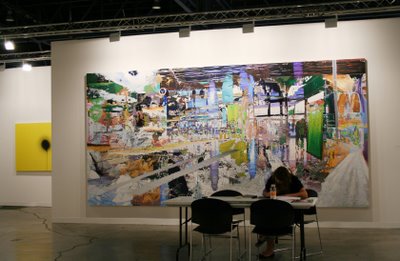
Corinne Wasmuht: Donde Llegar at Galerie Gisela Capitain; Hiroshi Sugito at Arndt & Partner
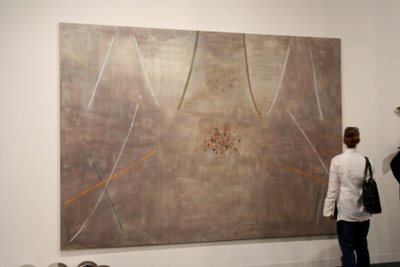
The third and fourth large abstractions were by Tomory Dodge, a young painter from Los Angeles, at New York’s CRG Gallery . Dodge’s paintings dance on the edge of image and materiality. Thick impasto defines a delicate suggestion of waterscape, for instance, in gestures both crude and refined. And the fifth was by Lydia Dona, a veteran painter, represented here by Jacob Karpio Galeria with a brash orange painting as unconstrained as Sarah Morris’s is perfectly plotted and contained.
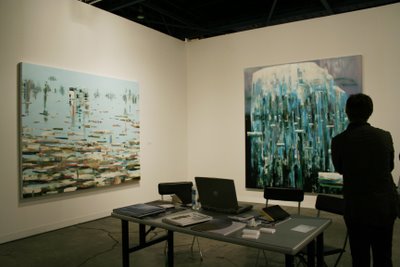 Tomory Dodge at CRG Gallery (above); Lydia Dona at Karpio Galeria
Tomory Dodge at CRG Gallery (above); Lydia Dona at Karpio Galeria
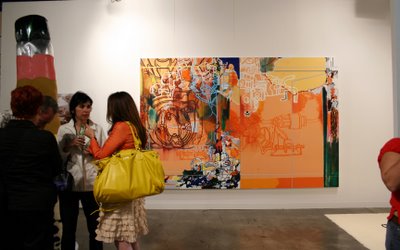 The interesting thing about seeing so much large, large, large is that when you come across small you look, look, look. Thus was the case with Richard Tuttle’s five small paintings and a singular sculpture at Sperone Westwater. Tuttle’s work always beckons for a closer view anyway.
The interesting thing about seeing so much large, large, large is that when you come across small you look, look, look. Thus was the case with Richard Tuttle’s five small paintings and a singular sculpture at Sperone Westwater. Tuttle’s work always beckons for a closer view anyway.

Richard Tuttle: Reservations, 1999, five painted constructions, each 15x15 inches, and Space, 1964, acrylic on linen on wood construction, at Sperone Westwater
Up shortly: All’s Fair: Basel Miami (Sculpture, Installations)
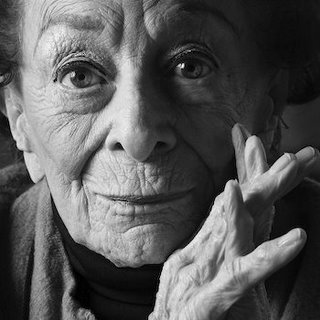
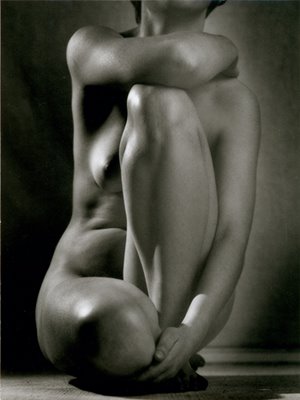

 Ruth Bernhard: One World, 1946, above; Lifesavers, 1930
Ruth Bernhard: One World, 1946, above; Lifesavers, 1930













 Imi Knoebel: Gelb (Yellow; above) with installation view at Galerie Vera Munro
Imi Knoebel: Gelb (Yellow; above) with installation view at Galerie Vera Munro Luiz Zerbini,
Luiz Zerbini, 




 The interesting thing about seeing so much large, large, large is that when you come across small you look, look, look. Thus was the case with Richard Tuttle’s five small paintings and a singular sculpture at
The interesting thing about seeing so much large, large, large is that when you come across small you look, look, look. Thus was the case with Richard Tuttle’s five small paintings and a singular sculpture at 














